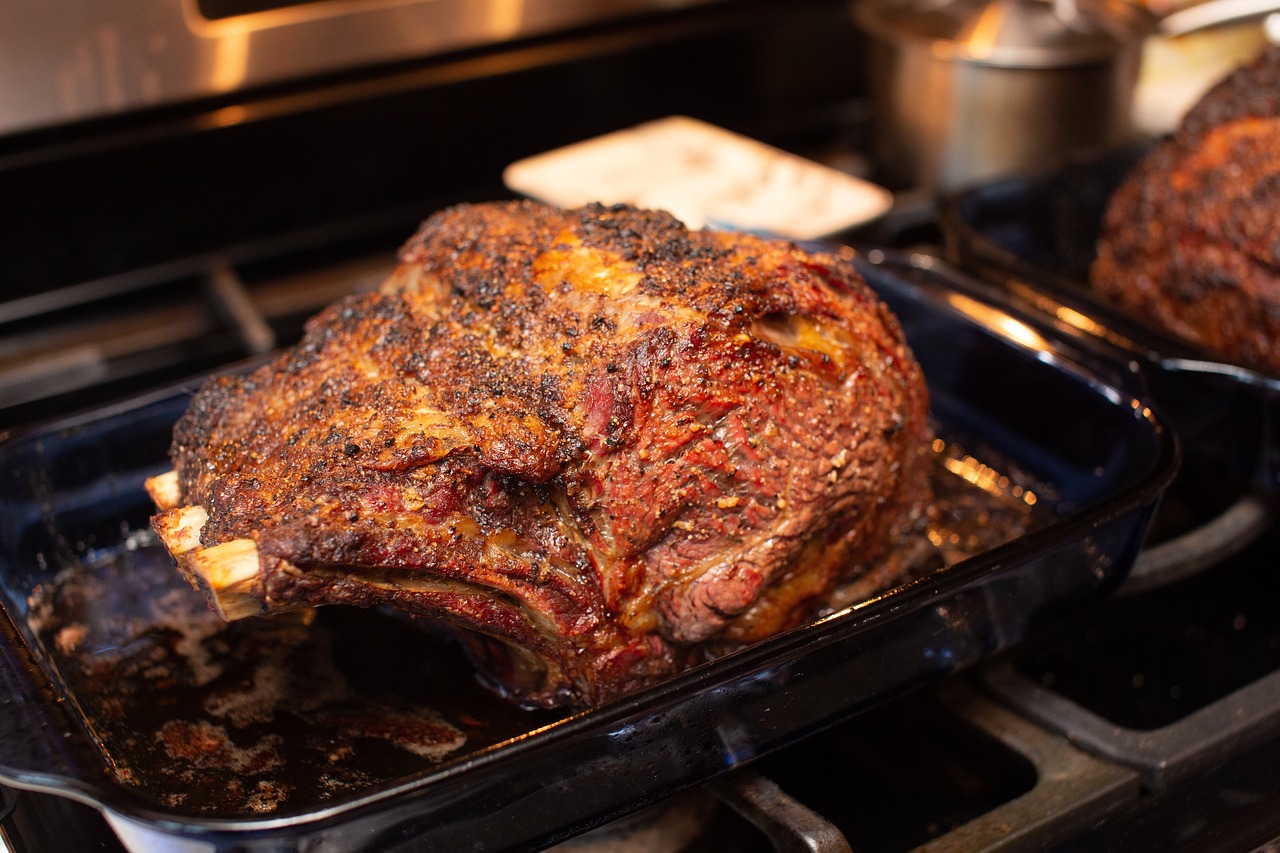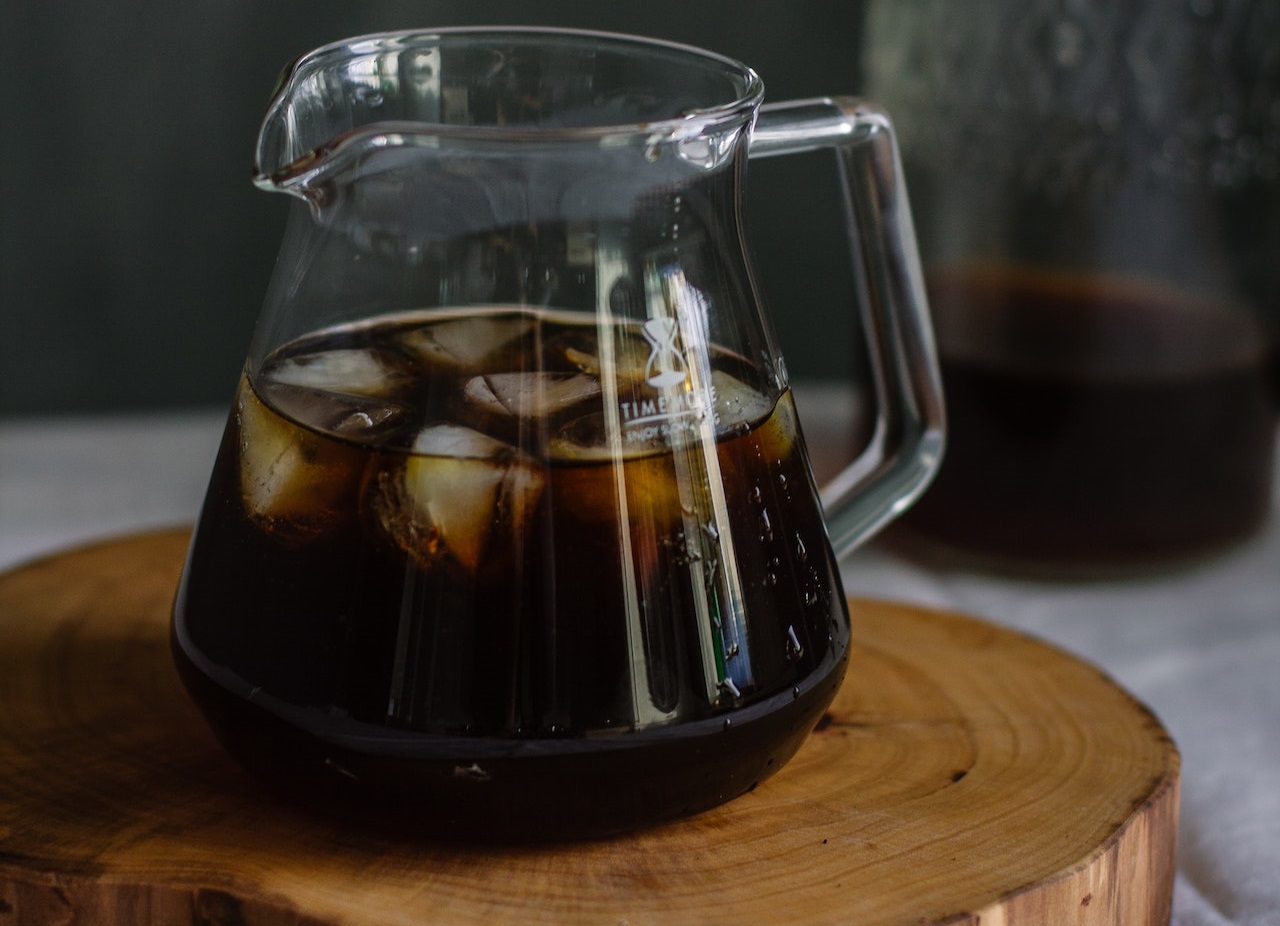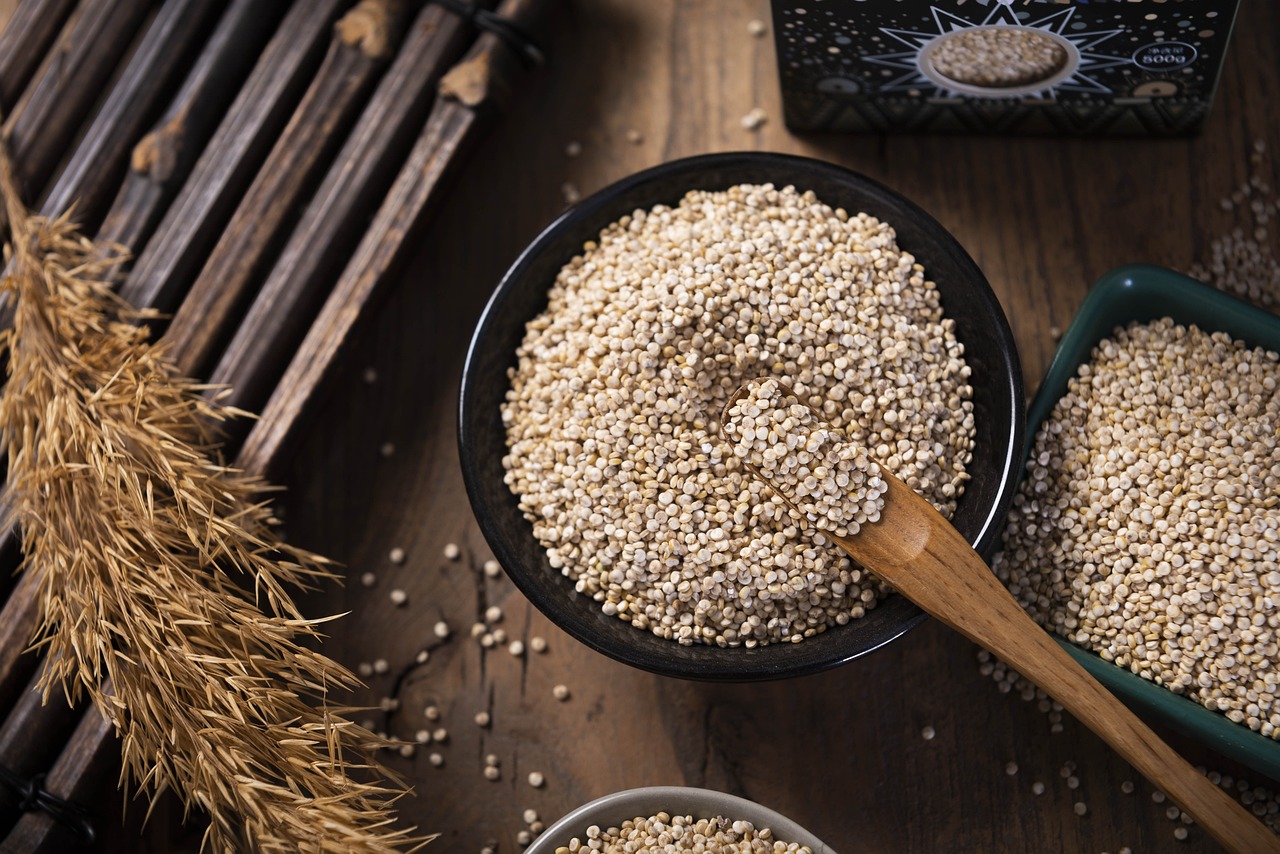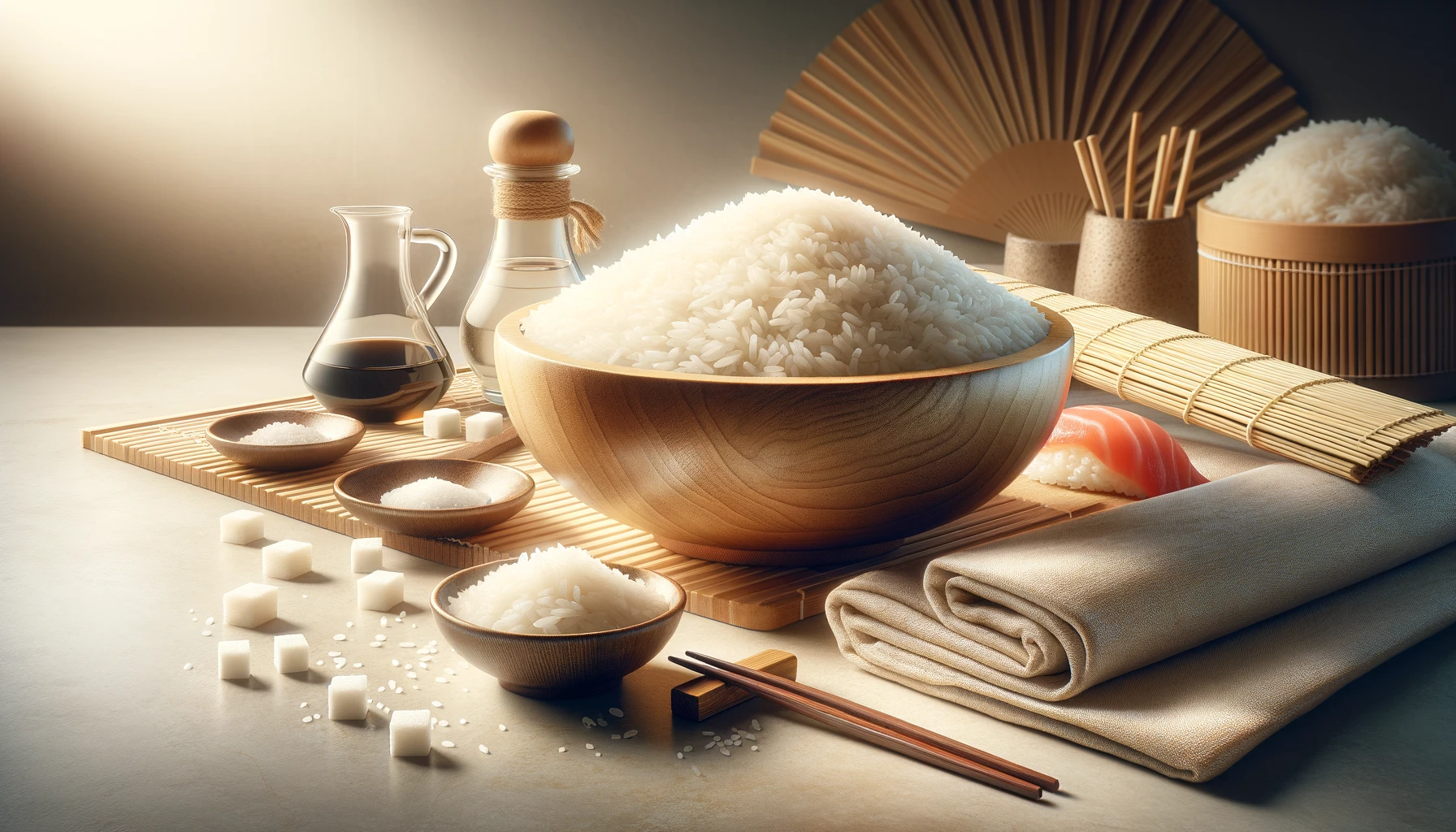Congratulations! You’ve chosen prime rib, the crown jewel of meats, and probably the reason you’ve had to skip eating out for a month. Or was it the reason you’ve been sucking up to your boss? Never mind. Let’s dive into the delicious world of prime rib. Because, let’s be real, you could just slap this expensive slab on the grill and hope for the best, but where’s the fun (or the flavor) in that?
Ingredients:
- A prime rib roast: Size? Up to you, but if you’re feeling especially generous (or compensating for something), go big. Generally, one rib will serve two average-sized humans or one very ambitious eater.
- 3 tablespoons of the finest sea salt: (Or, you know, whatever you have lying around. I mean, it’s not like it’s a fancy dinner or anything.)
- 2 tablespoons cracked black pepper: If you don’t have cracked pepper, just use your regular pepper. Your guests won’t notice, unless you invite Gordon Ramsay.
- 4 cloves garlic, minced: If you’re a vampire, skip this ingredient or substitute with onion. Or just don’t eat.
- Fresh rosemary and thyme: Just steal some from your neighbor’s garden. They’ll never know. (Joking! Or am I?)
- 2 tablespoons olive oil: Or just use that leftover grease from your last fast-food binge.
Let’s get started, shall we?
1. Thaw Your Meat if it’s Frozen:
This may sound obvious, but you’d be surprised. Start by taking your prime rib out of the freezer, because you know, unlike your ex’s heart, we actually want this meat to thaw. Let it sit in the fridge for at least 24 hours. Don’t rush this step; nobody likes a cold-hearted roast.
2. Become a Massage Therapist:
About an hour before you’re ready to cook, take the prime rib out of the fridge. You want it to reach room temperature. This is also a great time to give your meat a good rub-down. Mix salt, pepper, minced garlic, rosemary, thyme, and olive oil in a bowl. Now massage this mixture onto your prime rib like you’re trying to convince it to sign up for a yearly spa membership. It’s worth it, trust me.
3. Oven Prepping:
Preheat your oven to 500°F (260°C). I know, it sounds scary hot, but we’re only going to roast our prime rib at this temperature for a short time. If you start hearing the oven protest or see it trying to leave your house, you’ve probably gone a bit too far.
4. It’s Searing Time:
Remember that blazing hot oven you preheated? It’s time to toss in that massaged beauty. But first, a reminder: we’re using this extremely high temperature to sear the outside of the roast and lock in those juices. Place the roast, rib-side down, in a roasting pan. Cook for 15 minutes at 500°F (260°C), then drop the temperature down to 325°F (165°C). Don’t forget this step unless you fancy a visit from your local fire department!
5. Patience, Grasshopper:
Now, for the waiting game. Roast at 325°F for about 15 minutes per pound (33 minutes per kilogram) for medium rare. You do have a meat thermometer, right? Oh, you don’t? Well, you can either take a wild guess (not recommended), or you can use the ancient finger test. Press on the meat; if it feels like the fleshy part of your palm below your thumb when you touch your thumb and middle finger, it’s medium rare. If it feels like you’ve left it in the oven for a decade, you’ve gone too far.
And for those who do have a thermometer, 130°F (54°C) is your golden number for medium rare, but pull it out at 125°F (52°C) to account for its post-oven sizzle.
When you’re cooking prime rib internal temperature is a reliable indicator of doneness. Here’s a breakdown for prime rib:
- Rare: An internal temperature of 120°F (49°C)
- Medium Rare: 130°F (54°C)
- Medium: 140°F (60°C)
- Medium Well: 150°F (65°C)
- Well Done: 160°F (71°C)
However, remember that the meat will continue to cook slightly after you remove it from the oven due to residual heat (often referred to as “carry-over cooking”). It’s often advised to take the roast out of the oven when it’s about 5°F (about 3°C) below your desired final temperature.
6. Let it Rest, For Heaven’s Sake:
Once you’ve pulled your masterpiece from the oven, resist all urges to dive right in. Let the meat rest for at least 20 minutes before slicing. This is essential. It allows the juices to redistribute. It’s like after a good workout – even meat needs a cool down period. Cover it lightly with aluminum foil. Maybe sing it a lullaby. Whatever helps.
7. The Grand Finale – Carving:
This is it. The moment you’ve been waiting for. When carving, aim between the ribs, and remember to cut against the grain for the most tender slices. Serve it up and bask in the inevitable “oohs” and “aahs.”
8. Facing Potential Disasters:
So, your prime rib is too rare? Just sear individual slices in a hot skillet for a minute or two. Overcooked it? Well, there’s always gravy. And if everything goes south? Remember, there’s beauty in every disaster. Tell your guests it’s “Cajun-style” or a “new experimental recipe”. Own it!
To Conclude:
You did it! You’ve ventured into the treacherous waters of prime rib cooking and emerged, hopefully unscathed and triumphant. Or at the very least, wiser and with a story to tell.
Remember, prime rib, like life, can be unpredictable. But with a little bit of humor and the right seasoning, you can turn any situation (or meat) into a memorable feast. Cheers to you, brave chef!
Pro Tips for Perfecting Your Prime Rib Game
- Know Your Meat: A prime rib can come bone-in or boneless. While bone-in can be a bit more flavorful due to the bone marrow seeping into the meat, boneless can be easier to carve. Decide based on your carving skills and flavor preference.
- Temperature is Key: Use a digital meat thermometer to ensure precise cooking. Aim for 120°F (49°C) for rare, 130°F (54°C) for medium rare, and 140°F (60°C) for medium. Remember, the roast will continue to cook a bit even after you pull it from the oven.
- Season Early: For even more flavor, season your prime rib with salt 24 hours before cooking. This allows the salt to penetrate deeper into the meat, ensuring every bite is seasoned to perfection.
- Herb It Up: Don’t limit yourself to rosemary and thyme. Feel free to experiment with other herbs like sage or even a sprinkle of smoked paprika for a slightly different flavor profile.
- Red Wine Reduction: Impress your guests further with a red wine reduction sauce. Simply simmer some red wine with chopped shallots, beef stock, and a sprig of rosemary. Reduce by half, strain, and serve alongside your prime rib.
- Don’t Ditch the Drippings: Those pan drippings are gold! Mix them with a bit of flour and beef broth over heat to make a delicious au jus or gravy.
- Size Matters: If you’re unsure about the size of the roast to get, it’s generally a good idea to budget about 1/2 pound (0.23 kg) per person (uncooked weight) for a boneless roast, and up to 1 pound (0.45 kg) per person for a bone-in roast.
- High Heat, Then Low: Starting with a high heat ensures you get that delicious, crispy crust. After the initial sear, lowering the heat lets the roast cook evenly without burning the outside.
- Roasting Rack: Use a roasting rack to ensure even heat distribution around the meat. This helps with even cooking and achieving that perfect crust all around.
- Post-Cooking Tent: When letting your prime rib rest, tent it with aluminum foil. This keeps it warm and allows for carry-over cooking without making the crust soggy.
Remember, as with all cooking endeavors, confidence in the kitchen, and a dash of love (and humor) go a long way. With these pro tips in your arsenal, you’re well on your way to becoming the prime rib maestro among your friends and family!
Prime Rib FAQ: Because We Know You’ve Got Questions
Look for a prime rib with good marbling (those little white fat lines). The marbling means flavor and tenderness. Also, if possible, opt for grass-fed or organic meat for a cleaner taste and ethical peace of mind.
Absolutely! In fact, seasoning up to 48 hours in advance can make the flavors penetrate even deeper. However, don’t go beyond 48 hours to prevent the meat from getting too salty.
Don’t panic! Thinly slice the overcooked prime rib and serve it with a flavorful sauce, like au jus or a red wine reduction. It’ll mask the overcooked texture and still taste fantastic.
Store any leftovers in an airtight container in the refrigerator. It should keep well for up to 3-4 days. For longer storage, consider freezing, but remember that this may alter the meat’s texture upon reheating.
To retain its juiciness, reheat it in the oven at a low temperature (around 250°F or 120°C). Cover it with aluminum foil to prevent drying out, and heat until it reaches your desired temperature.
It’s largely a matter of preference. Bone-in can provide a bit more flavor and is traditionally considered more “gourmet,” but boneless can be easier to carve and serve. Either way, it’s hard to go wrong with a well-cooked prime rib.
While the traditional method involves roasting in an oven, you can definitely use a slow cooker or sous-vide for prime rib. These methods can produce incredibly tender results but might lack the crispy crust that oven-roasting provides.
While it’s not “mandatory” (we’re not the food police), it’s highly recommended. Resting allows the juices to redistribute throughout the meat, resulting in a juicier slice when you cut into it.
Cooking times can vary based on several factors, including actual oven temperature and meat thickness. Always use a meat thermometer to check the doneness rather than relying solely on time.



